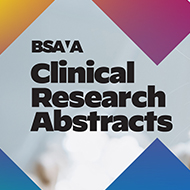Leopards identifiable by their roar, study finds
The 'sawing roar' of a leopard is used to attract mates and defend territory.
Researchers from the University of Exeter have discovered that each leopard has its unique roar, which they can use to identify individual animals.
Using recordings of leopard roars, researchers were able to identify individual leopards by their vocalisations with an accuracy of 93 per cent.
Leopards are of particular interest because they are listed as ‘vulnerable’ on the IUCN Red List of Threatened Species. However, leopards’ nocturnal and solitary nature means it is difficult for scientists to gather reliable data to help reverse population declines.
Researchers believe that bioacoustics, the study of animal sounds, will allow them to monitor leopards over larger areas.
The ‘sawing roar’ of the leopard, which consists of a repeated low-frequency pattern of strokes, is used to attract mates and defend territory from at least a kilometre way.
The research team examined leopards across an expanse of the Nyerere National Park in Tanzania. They fixed 50 pairs of cameras onto trees along routes and trails, each with microphones placed alongside them.
This helped them to identify the leopard from the camera, linking it to the roaring bouts in the audio. Using a modelling system to analyse the temporal pattern of the roar, the team found that individual identification was possible with an accuracy of 93.1 per cent.
As well as identifying the unique characteristics behind each leopard’s roar, researchers say that the study revealed the benefits of using multiple forms of technology. They said that using different technology enabled them to study a wider variety of species traits than one device would have done.
Jonathan Growcott, lead author and a PhD student at the University of Exeter, said: “Discovering that leopards have unique roars is an important but fundamentally quite basic finding that shows how little we know about leopards, and large carnivores in general.
“We hope it will allow leopards to become the focus of more acoustically complex science such as population density studies and open the door to more work on how large carnivores use vocalisations as a tool.”
The full study can be found in the journal Remote Sensing in Ecology and Conservation.
Image © Shutterstock



 The BSAVA has opened submissions for the BSAVA Clinical Research Abstracts 2026.
The BSAVA has opened submissions for the BSAVA Clinical Research Abstracts 2026.